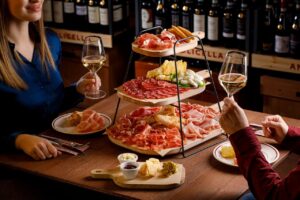Rationalize costs instead of lowering them, which compromises product quality, eliminate waste, but also really understand what the cost of producing a bottle that goes on the market is: today these are not options but a duty imposed by the global economic crisis and business ethics. This is the message from the Association of Italian Oenologists, Assoenologi Convention.
"It is necessary to be aware of production costs and often wine producers are not”, said Paolo Peira, director of Antesi, a company for agriculture training and refresher courses. For example, what is the production cost of a single bottle? There are many factors to account for, "but taking a model company with 200 acres of vines and a production volume of 1.5 million bottles a year, one can estimate that in energy costs, various phases of labor costs, from harvesting to aging, packaging to storage, raw materials to fermentation, the cost will vary from 1 euro a bottle, for a low to medium quality red wine and a production of 700.000 bottles, to 4.3 euros for a high quality wine and a production of only 50.000 bottles.
Besides just the numbers, though, it is important make a careful analysis of costs item-by-item, case by case, to understand how to streamline them, like all the successful companies of every industry sector do.
"It is possible to streamline costs even in the vineyards, by using a mechanized system that does not lower the quality but actually often improves it. And you can cut working time (and therefore costs) from 300 hours of manual labor per hectare, down to 20-30 hours per hectare and in some cases, mainly in the plains, to zero hours of human labor”, says Louis Bonato, director of Development Environment, specialized in the management of mechanical cultivation operations in the vineyards.
"And quality is not an issue, because reliable, sophisticated and calibrated machinery and GPS-based tools allow precise and targeted interventions at every stage, from planting to harvesting, to pruning and treatments, and precise figures on each piece of the vineyard. They can also manage the vineyard and in optimal situations pick grapes, which, especially for large companies, would be impossible to do as well, and further with a reduced impact on the environment thanks to more precise and less wasteful treatments. It is no accident, for example, that in France there are over 20.000 active mechanical harvesters, while there are only 2.000 in Italy. Of course, there are situations in which the morphological characteristics of the soil, especially in hilly areas with steep climbs or mountainous areas, the use of mechanical would be much less advantageous, if not impractical in some stages".
In any case, what one must understand is that "the winery, which certainly has its own specific characteristics, should be considered like any other business, it must generate profit and cash”, said Enrico Zanoni, CEO of CAVIT, one of the most important Italian wine cooperatives - otherwise it will fall. Sure, there are critical points of the product and production system: the long time it takes to obtain a wine; not being able to reuse raw materials, because every vintage is different and the small size of the vast majority of Italian wineries and their fragmentation, which for example, reduces bargaining power with mass retailers, now the predominant sales channel.
So, if wine cannot be managed exactly the same as other consumer goods, there are however, a few common key points that should be kept in mind when making short, medium or long term planning. Like the fact that critical mass is a must to scale economy and more communication on the new media also offers important and affordable opportunities. Or opening to more advanced and structured forms of management, wherever possible, or that wineries take some phases of marketing that have been too out-sourced to third parties, as well as strengthening the brand”.
Copyright © 2000/2025
Contatti: info@winenews.it
Seguici anche su Twitter: @WineNewsIt
Seguici anche su Facebook: @winenewsit
Questo articolo è tratto dall'archivio di WineNews - Tutti i diritti riservati - Copyright © 2000/2025








































































































































































































